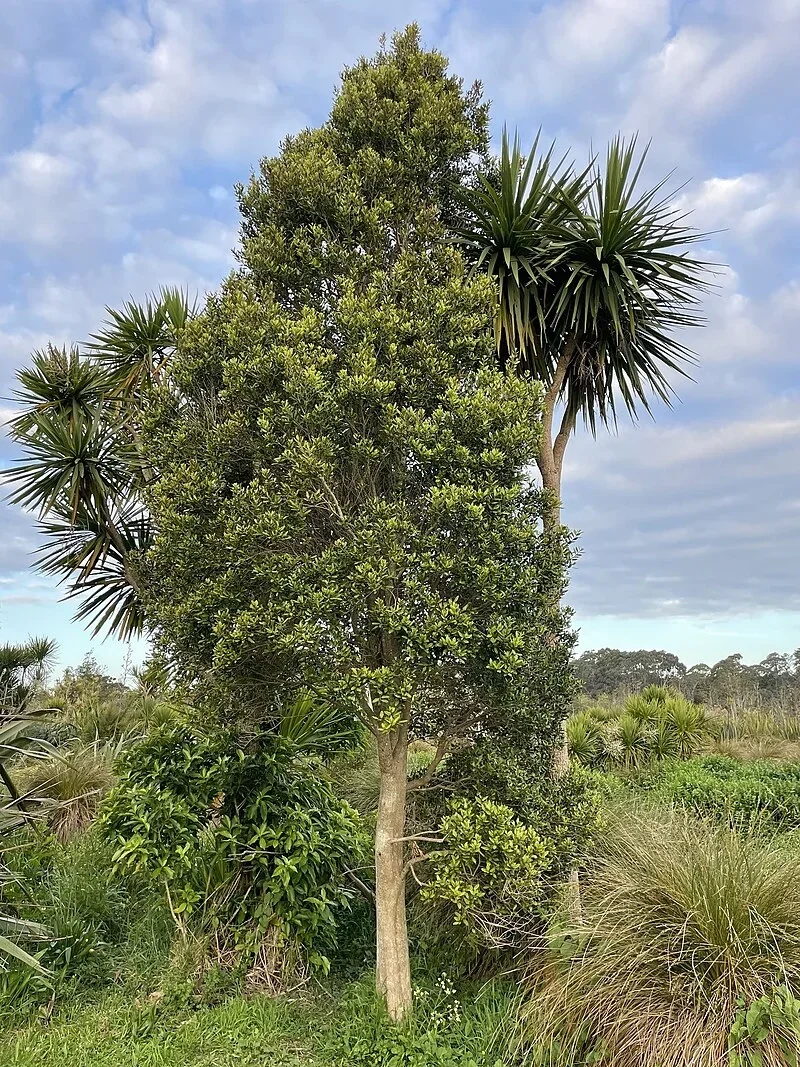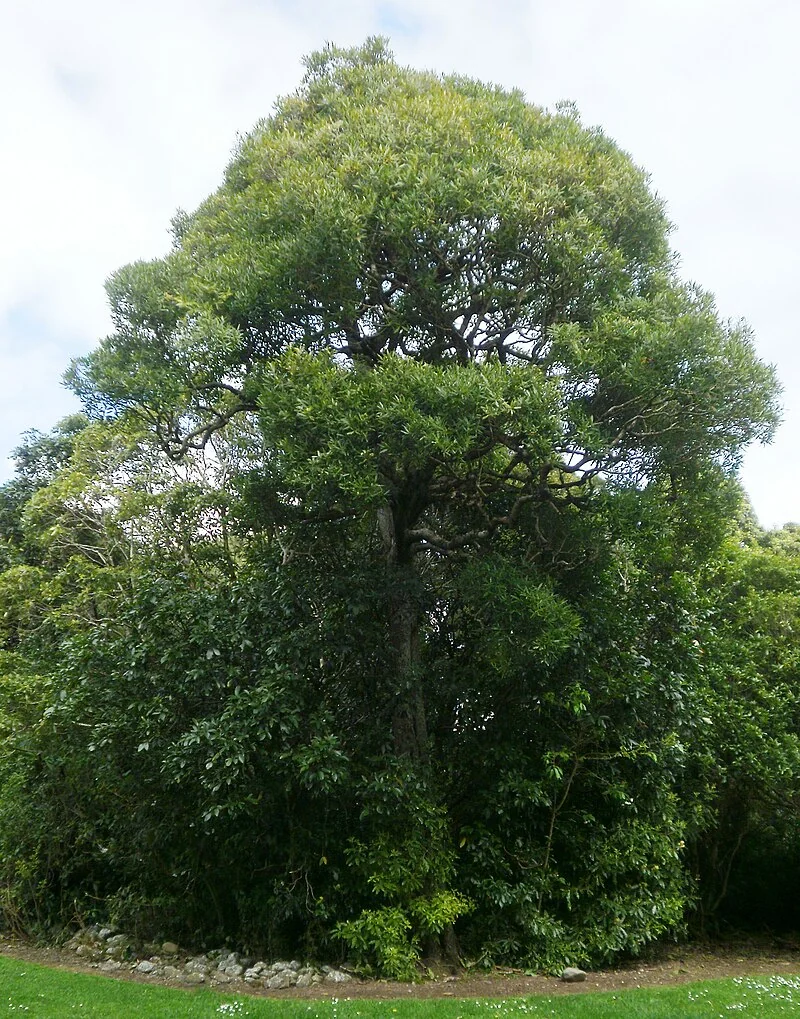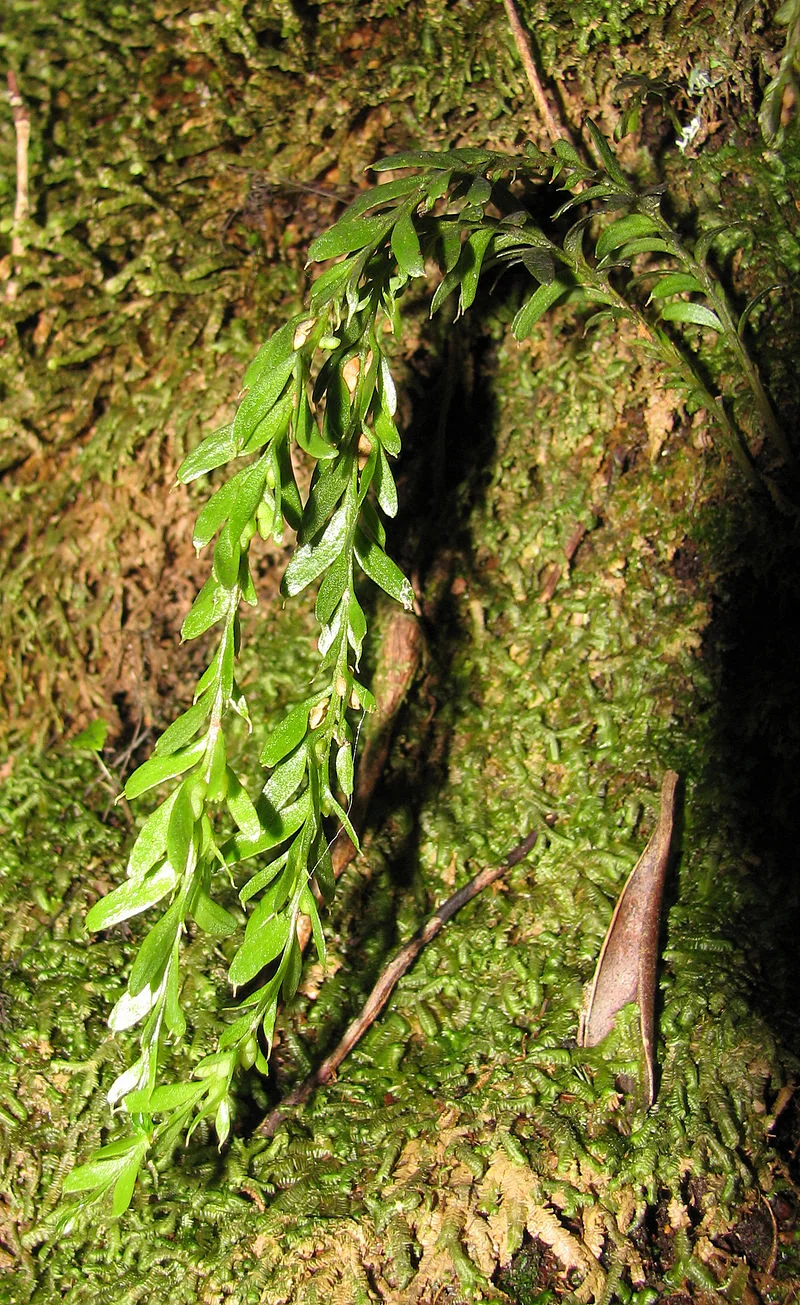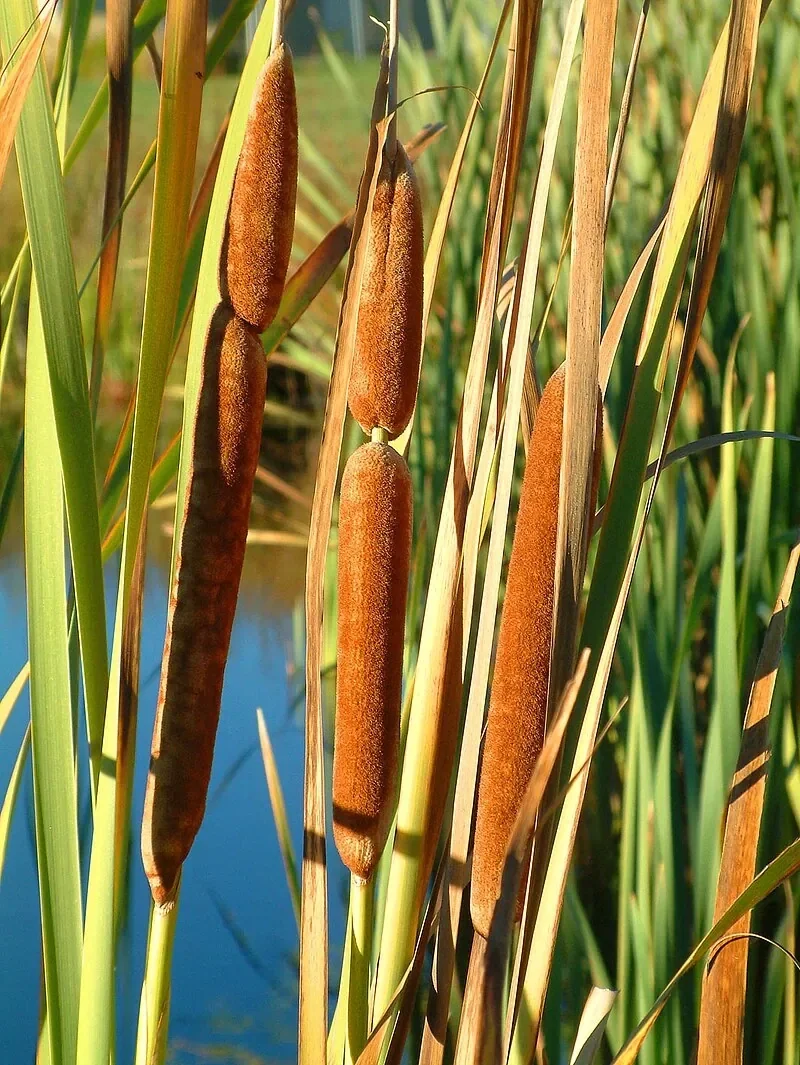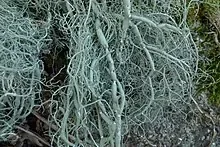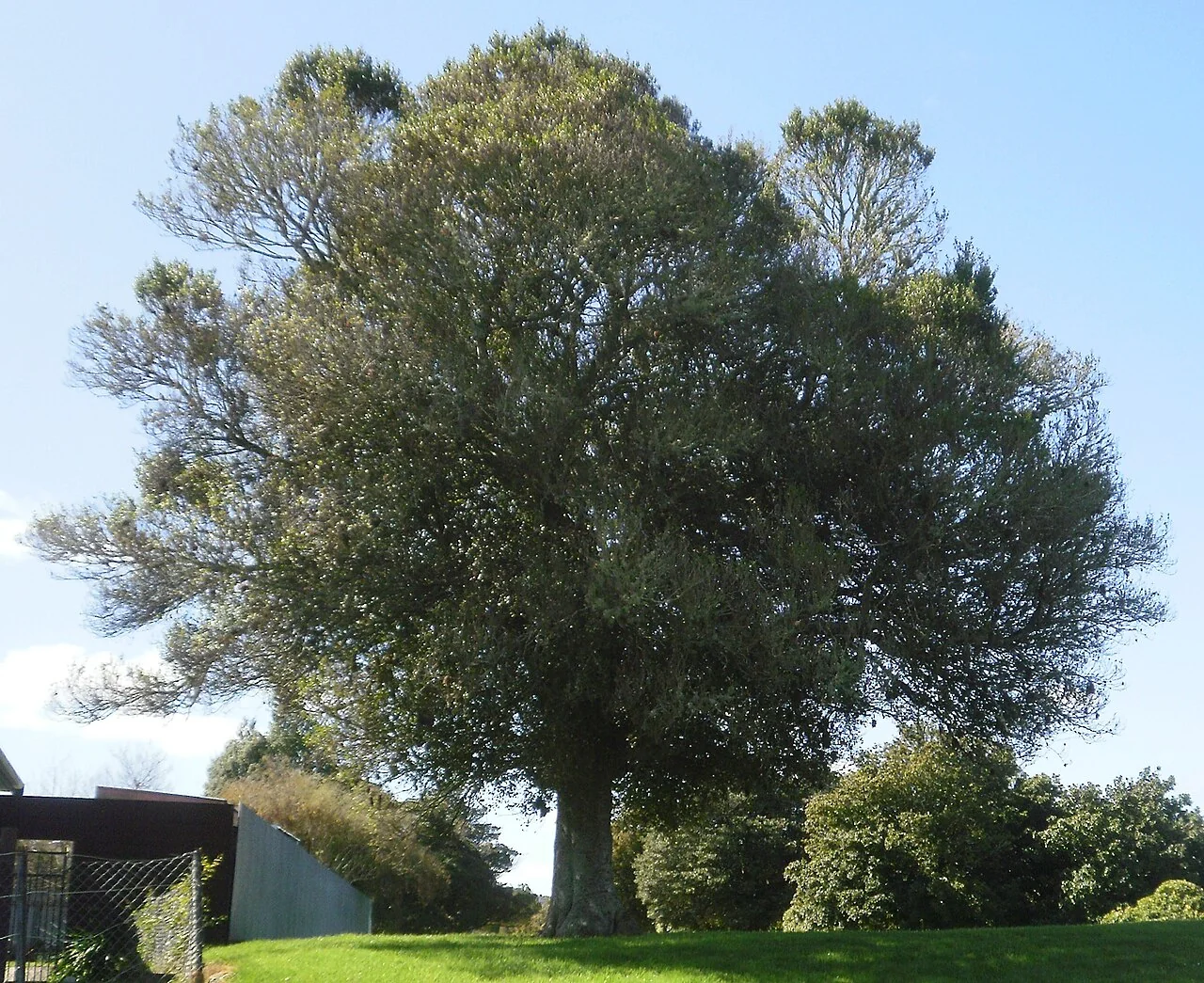
Turepo
Streblus heterophyllus
This native plant, known as Turepo (scientific name: Streblus heterophyllus ), also called small-leaved milk tree, is a versatile species endemic to New Zealand. It is widespread throughout the North and South Islands, typically found in lowland forests and forest margins. Characterized by its glossy, leathery leaves with serrated edges and small, inconspicuous flowers, its juvenile form features slender, interlaced branches with lobed leaves, while adult leaves are mostly unlobed. It can grow up to 12-15 meters tall and is known for its dense, durable wood. Its edible red berries are a food source for native birds. This comprehensive guide provides detailed information on its care, propagation, and importance within the New Zealand ecosystem. Understanding this plant contributes to the appreciation of our rich biodiversity and heritage. native trees

Plant Description
Botanical Features
Turepo (Streblus heterophyllus), also known as Variable-leaved Streblus, Heterophyllous false mastic, Heterophyllous mastic, small-leaved milk tree, is a species of flowering plant in the Moraceae family. This plant is native to tropical Asia and New Zealand. In New Zealand, it is an endemic species found in lowland forests throughout the North and South Islands. It is typically a small tree or erect shrub, growing up to 5 meters in height, but can reach up to 12 meters in lowland forest conditions. Juvenile plants often have slender, interlaced, divaricating branches with lobed leaves. Mature plants feature small, oval, toothed, glossy, leathery leaves with serrated edges. The flowers are small, white, star-shaped, and inconspicuous, borne on short erect spikes. It produces small, black, round seeds and red berries from late spring to autumn.
Quick Facts
Plant Specifications
| Scientific Name | Streblus heterophyllus |
|---|---|
| Height | 6-15 m |
| Spread | ~4 m |
| Water Needs | Moderate |
| Light | Full sun to part shade |
| Frost Tolerance | High |
| Salt Tolerance | Moderate |
| Growth Rate | Medium |
| Lifespan | Long |
Climate Best Suited to
Turepo (Streblus heterophyllus) is widespread throughout the North and South Islands of New Zealand, typically found in lowland forests and forest margins. It is highly adaptable, thriving in well-drained soils and tolerating a range of light conditions from full sun to partial shade. Its natural habitat suggests a good tolerance for various New Zealand climates, including frost.
Regional Suitability
| City | Climate Suitability |
|---|---|
| Whangārei | Ideal |
| Auckland | Ideal |
| Hamilton | Ideal |
| Tauranga | Ideal |
| Rotorua | Ideal |
| Gisborne | Ideal |
| New Plymouth | Ideal |
| Napier | Ideal |
| Whanganui | Ideal |
| Palmerston North | Ideal |
| Wellington | Ideal |
| Nelson | Ideal |
| Christchurch | Ideal |
| Dunedin | Ideal |
| Invercargill | Ideal |
Natural Habitat
Turepo (Streblus heterophyllus), also known as the small-leaved milk tree, is a versatile species endemic to New Zealand. It is widespread across both the North and South Islands, though it is not present on Stewart Island.
Key Habitats Include:
- Lowland Forests and Forest Margins: It is typically found in lowland forests and forest margins, including damp lowland forest environments.
- Adaptability: This species is highly adaptable, thriving in well-drained soils and tolerating a range of light conditions from full sun to partial shade.
Preferred Conditions:
- Soil: Turepo is adaptable to a range of soil conditions, but thrives in well-drained environments. It can tolerate both damp and well-drained soils, making it quite versatile. Good drainage is important to prevent root rot, especially for young plants.
- Light: It prefers full sun for optimal growth and vigor, but it also exhibits good tolerance to partial sun or partial shade. It can even grow in shaded environments, making it a versatile choice for various garden aspects.
- Climate: Its natural habitat suggests a good tolerance for various New Zealand climates, including frost.
The presence of Streblus heterophyllus in these diverse habitats underscores its ecological importance in contributing to the biodiversity and structural complexity of New Zealand's native forests.
Plant Conservation
Streblus heterophyllus, also known as Paratrophis microphylla or the small-leaved milk tree, is endemic to New Zealand. Its conservation status has been assessed multiple times and is consistently listed as "Not Threatened" as of 2023, 2017, 2012, 2009, and 2004.
Growing Requirements
Soil Requirements
Turepo (Streblus heterophyllus) is adaptable to a range of soil conditions, but thrives in well-drained environments. It can tolerate both damp and well-drained soils, making it quite versatile. Good drainage is important to prevent root rot, especially for young plants.
- Tolerates a wide range of soil types from clay to sandy
- Prefers well-draining soils but can handle occasional waterlogging
- Thrives in moderately fertile soils but will grow in poor soils too
- Can tolerate slightly acidic to slightly alkaline pH
- Handles coastal conditions including salt spray
Light Requirements
Turepo (Streblus heterophyllus) prefers full sun for optimal growth and vigor, but it also exhibits good tolerance to partial sun or partial shade. It can even grow in shaded environments, making it a versatile choice for various garden aspects.
- Full sun for optimal growth and form
- Can tolerate partial shade but may develop a leggier form
- At least 6 hours of direct sunlight daily is ideal
- Northern or eastern exposures work well in garden settings
Water Requirements
Turepo (Streblus heterophyllus) requires weekly watering for optimal health, especially when young or newly planted. It thrives in well-draining soil to prevent root rot, mimicking its natural habitat's drainage characteristics. Once established, it can tolerate both damp and well-drained conditions, showing good adaptability to varying moisture levels.
- Moderate watering during establishment (first 1-2 years)
- Drought-tolerant once established
- Can handle periods of soil saturation
- Reduce watering in winter when growth slows
- Signs of overwatering include yellowing leaves and crown rot
Planting Guide
When to Plant
The ideal time to plant Turepo (Streblus heterophyllus) is during autumn or spring. These seasons offer moderate temperatures and reliable rainfall, providing optimal conditions for root establishment before the extremes of summer heat or winter cold.
Site Selection
Choose a site with:
- Full sun to partial shade for best growth and form
- Well-draining soil, though adaptable to most soil types
- Protection from strong, persistent winds, especially for young plants
- Adequate space for its mature size, considering both height and spread
- Good air circulation to prevent fungal issues
Planting Procedure
- Dig a hole twice as wide and the same depth as the root ball
- Amend heavy clay soils with compost or well-rotted manure to improve drainage and fertility
- Position the plant so the crown sits at soil level, ensuring it is not planted too deep
- Backfill with soil, gently firming down to remove any air pockets around the roots
- Create a small watering basin around the plant to help retain moisture
- Water thoroughly immediately after planting to settle the soil
- Apply a 5-10cm layer of organic mulch, keeping it away from the trunk to prevent rot
Initial Care
Water regularly during the first growing season, especially during dry periods, to ensure proper establishment. Once established, Turepo (Streblus heterophyllus) is quite adaptable to varying moisture levels but will benefit from occasional deep watering during prolonged dry spells to maintain lush growth.
Ecological Role
Ecosystem Roles
The ecological importance of Turepo (Streblus heterophyllus) within its native ecosystem is significant. This section explores its role in supporting biodiversity, its interactions with local wildlife, and its contribution to the overall ecological balance of its habitat.
- Contribution to local biodiversity.
- Interactions with native fauna (e.g., birds, insects).
- Role in ecosystem health and stability.
Uses and Significance
Garden Uses
- Specimen tree for visual impact
- Suitable for native gardens and restoration projects
- Enhances native garden aesthetics and biodiversity
- Provides architectural accent with its unique structure
- Effective for erosion control on slopes and banks
Landscaping Applications
Design Ideas
Discover how Turepo (Streblus heterophyllus) can be effectively integrated into various landscaping designs. This section offers creative ideas and practical advice for using this plant to enhance the beauty and functionality of your outdoor spaces, from residential gardens to public parks.
- Design ideas for different garden styles.
- Best uses in various landscape settings.
- Combining with other plants for aesthetic appeal.
Seasonal Care Calendar
Spring
In spring, Turepo (Streblus heterophyllus) begins its active growth phase. New foliage emerges, and it's an ideal time for planting new specimens or propagating. Ensure adequate moisture and monitor for early signs of pests.
- New growth begins with fresh foliage development
- Apply a balanced, slow-release fertilizer if desired
- Excellent time for planting new specimens or dividing offsets
- Monitor for new pest activity and address promptly
Summer
Summer is the peak growing season for Turepo (Streblus heterophyllus), often accompanied by flowering and fruiting. Consistent watering is important, especially for young plants, to support vigorous growth and prevent stress during dry periods.
- Flowering occurs mid-spring to summer, with fruiting from late spring to autumn.
- Water young trees regularly during extended dry periods.
- Monitor for general pests.
- Avoid heavy pruning during the active growing season.
Autumn
During autumn, Turepo (Streblus heterophyllus) continues to fruit, providing food for native birds. It's also a good time for planting and general garden cleanup as the plant prepares for cooler months.
- Fruiting continues, attracting native birds.
- Good time for planting new specimens to establish before winter.
- Clean up fallen leaves if a tidy appearance is desired.
Winter
Winter is generally a dormant period for Turepo (Streblus heterophyllus). Minimal care is required, though young plants may benefit from protection in colder regions. This is an opportune time for any necessary structural pruning.
- Generally dormant with minimal growth activity
- No special winter protection needed in most mild climates
- Suitable time for structural pruning if required
- Fallen leaves can be left as mulch or removed for tidiness
When to Prune and How Much
Pruning Guidelines
Turepo (Streblus heterophyllus) generally requires minimal pruning to maintain its natural form and health. Pruning should focus on removing dead or damaged growth and shaping the plant as needed.
- Remove dead, damaged, or diseased branches at any time of year
- Light formative pruning when young helps establish good structure
- To create a multi-trunked specimen, cut the main stem to encourage branching
- Fallen leaves can be removed for a tidier appearance, or left as natural mulch
- If necessary, lower branches can be removed to create clearance underneath
- Major pruning is best done in late winter to early spring before new growth
Always use clean, sharp tools for pruning to minimize the risk of disease and ensure clean cuts. The plant often responds well to pruning with vigorous new growth, contributing to a fuller, healthier appearance.
How to Grow Turepo
Turepo (Streblus heterophyllus), also known as the small-leaved milk tree, is a versatile native species endemic to New Zealand. It is widespread throughout the North and South Islands, typically found in lowland forests and forest margins. Characterized by its glossy, leathery leaves and small, inconspicuous flowers, its juvenile form features slender, interlaced branches with lobed leaves, while adult leaves are mostly unlobed. This hardy native establishes well from fresh seed, and semi-hardwood cuttings can also root with care. Young plants prefer sun to light shade, free-draining soils, shelter from strong winds, and steady moisture during their first seasons. Understanding its propagation methods is key to successfully cultivating this important native tree.
From Seed
Propagating Turepo from fresh seed is a reliable and straightforward method. Collect ripe fruit in late summer to autumn, ensuring the seeds are fully mature. Remove all pulp from the seeds and wash them clean; sow promptly for best viability. Use a free-draining, sterile seed-raising mix, such as a blend of sand and compost. Sow the seeds shallowly (approximately 5 mm deep) and keep the medium evenly moist in bright, indirect light at temperatures between 15-22 °C. Germination typically occurs within several weeks. Once seedlings have developed a few true leaves and their root systems are stable, carefully prick them out into individual small pots, minimizing root disturbance. Grow them on in a sheltered environment with good light and reliable moisture before gradually hardening them off for planting out.
From Semi-Hardwood Cuttings
Semi-hardwood cuttings of Turepo can be taken from healthy, non-flowering shoots in late spring to summer. Select cuttings that are 8-12 cm long. Remove the lower leaves, reduce the remaining leaf area by half to minimize transpiration, and treat the cut bases with an IBA (Indole-3-butyric acid) rooting hormone. Insert the cuttings into a very free-draining medium (e.g., coarse perlite with fine bark) under high humidity (e.g., a mist bench or covered propagator), bottom heat around 18-22 °C, and bright filtered light. Keep the medium moist but not waterlogged. Rooting can be modest and variable, often taking several months. Pot on only once a firm root system has formed, and then gradually acclimatize the new plants to outdoor conditions. This method is generally more successful for experienced propagators or in specialized nursery settings with controlled environmental conditions.
Pests and Diseases
Turepo (Streblus heterophyllus) is generally a robust and resilient plant, but like all species, it can be susceptible to certain pests and diseases. Understanding these potential issues and implementing preventative measures can help maintain the plant's health and vigor.
Common Pests
- While generally resistant, monitor for common garden pests such as aphids or scale insects, especially on young growth.
Common Diseases
- Ensure good air circulation and well-drained soil to prevent fungal diseases, which can occur in overly wet conditions.
Environmental Stressors
- Drought Stress: While adaptable, prolonged dry periods can lead to wilting and leaf drop. Ensure adequate watering during dry spells, especially for young plants.
- Waterlogging: Poor drainage can cause root rot. Improve soil drainage to prevent this.
- Frost Damage: Turepo is considered frost tolerant, but young plants may still benefit from protection in severe frosts or colder regions.
Most established Turepo (Streblus heterophyllus) plants are resilient enough to recover from minor pest and disease issues without intervention. For valuable specimen trees or severe infestations, consult with a professional arborist or horticulturist for specific treatment recommendations and integrated pest management strategies.
Cultural Significance
Streblus heterophyllus, commonly known as the small-leaved milk tree or tūrepo, holds cultural significance primarily in New Zealand. Its Māori names include tūrepo and karakariki, with karakariki meaning "little karaka," possibly referencing the Planchonella genus. Historically, early European settlers in New Zealand utilized the milky sap exuded from the bark of Streblus heterophyllus as a substitute for milk in tea, which led to its common English name, "milk tree." Beyond its historical use as a milk substitute, the tree is valued for its dense wood and durable timber, which are used in construction and woodworking. Its edible fruits also serve as a food source for birds. Additionally, Streblus heterophyllus is cultivated as an ornamental plant in gardens and parks. It belongs to the Moraceae family, which is known for plants containing a milky latex, including mulberries, figs, breadfruit, and jackfruit trees.
Bonus Tip
When planting Streblus heterophyllus, thoroughly soak the rootball in a bucket of water before placing it in the ground. For an added boost, you can include a bit of liquid fertilizer in the water. This tree exhibits a distinct juvenile form with slender, interlacing branches and fiddle-shaped, lobed leaves. As it matures, it grows into an upright tree up to 12 meters tall, with adult leaves becoming mostly unlobed and oval. Historically, colonists used the milky juice exuded from its bark as a substitute for milk in tea.
